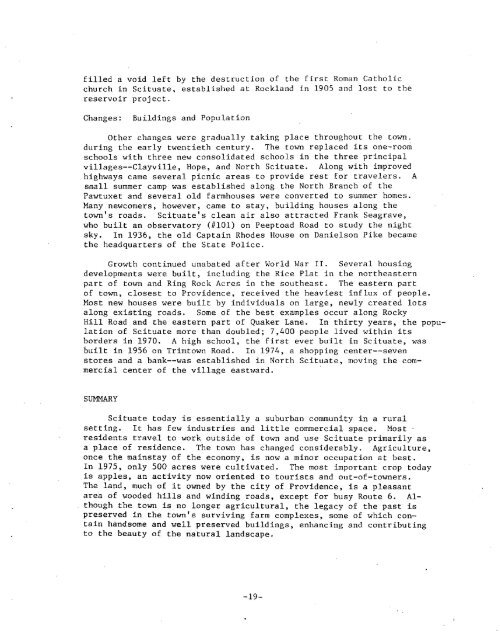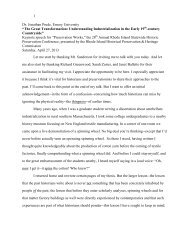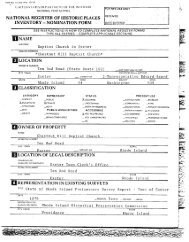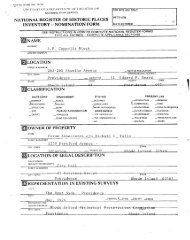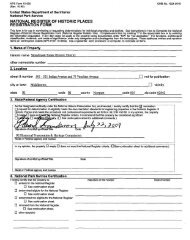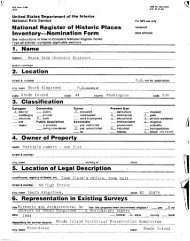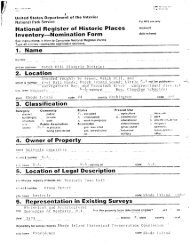Scituate - Rhode Island Historical Preservation & Heritage ...
Scituate - Rhode Island Historical Preservation & Heritage ...
Scituate - Rhode Island Historical Preservation & Heritage ...
You also want an ePaper? Increase the reach of your titles
YUMPU automatically turns print PDFs into web optimized ePapers that Google loves.
filled a void left by the destruction of the first Roman Catholic<br />
church in <strong>Scituate</strong>, established at Rockland in 1905 and lost to the<br />
reservoir project.<br />
Changes: Buildings and Population<br />
Other changes were gradually taking place throughout the town.<br />
during the early twentieth century. The town replaced its one-room<br />
schools with three new consolidated schools in the three principal<br />
villages--Clayville, Hope, and North <strong>Scituate</strong>. Along with improved<br />
highways came several picnic areas to provide rest for travelers. A<br />
small summer camp was established along the North Branch of the<br />
Pawtuxet and several old farmhouses were converted to summer homes.<br />
Many newcomers, however, came to stay, building houses along the<br />
town’s roads. <strong>Scituate</strong>’s clean air also attracted Frank Seagrave,<br />
who built an observatory 1/101 on Peeptoad Road to study the night<br />
sky. In 1936, the old Captain <strong>Rhode</strong>s House on Danielson Pike became<br />
the headquarters of the State Police.<br />
Growth continued unabated after World War II. Several housing<br />
developments were built, including the Rice Plat in the northeastern<br />
part of town and Ring Rock Acres in the southeast. The eastern part<br />
of town, closest to Providence, received the heaviest influx of people.<br />
Most new houses were built by individuals on large, newly created lots<br />
along existing roads. Some of the best examples occur along Rocky<br />
Hill Road and the eastern part of Quaker Lane. In thirty years, the popu<br />
lation of <strong>Scituate</strong> more than doubled; 7,400 people lived within its<br />
borders in 1970. A high school, the first ever built in <strong>Scituate</strong>, was<br />
built in 1956 on Trimtown Road. In 1974, a shopping center--seven<br />
stores and a bank--was established in North <strong>Scituate</strong>, moving the com<br />
mercial center of the village eastward.<br />
SUMMARY<br />
<strong>Scituate</strong> today is essentially a suburban community in a rural<br />
setting. It has few industries and little commercial space. Most<br />
residents travel to work outside of town and use <strong>Scituate</strong> primarily as<br />
a place of residence. The town has changed considerably. Agriculture,<br />
once the mainstay of the economy, is now a minor occupation at best.<br />
In 1975, only 500 acres were cultivated. The most important crop today<br />
is apples, an activity now oriented to tourists and out-of-towners.<br />
The land, much of it owned by the city of Providence, is a pleasant<br />
area of wooded hills and winding roads, except for busy Route 6. Al<br />
though the town is no longer agricultural, the legacy of the past is<br />
preserved in the town’s surviving farm complexes, some of which con<br />
tain handsome and well preserved buildings, enhancing and contributing<br />
to the beauty of the natural landscape.<br />
-19-


